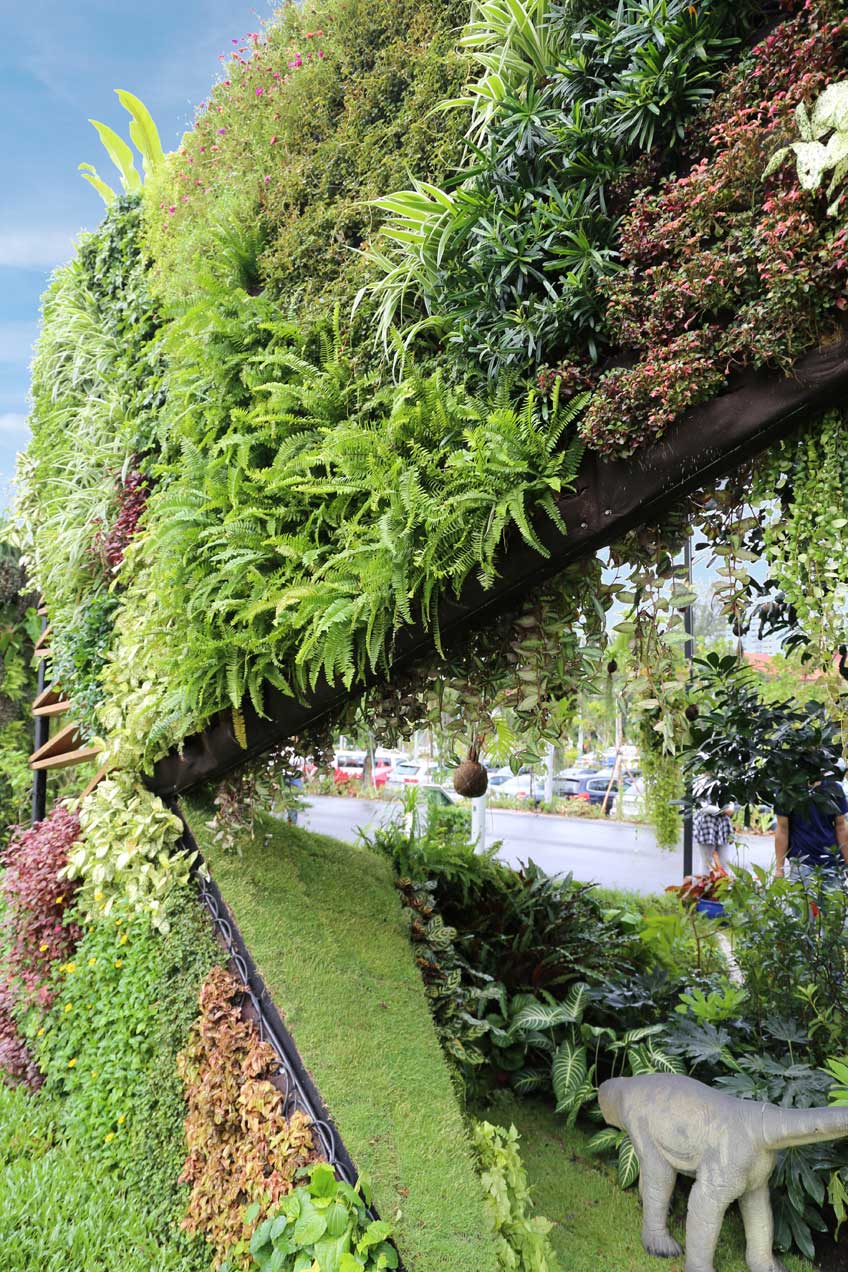The show gardens at Singapore's first-ever Horticulture Show earlier this year blurred the boundary between the natural and built environment and introduced us to a whole new place to garden - the ceiling!
Words: Kate Neale and Michael Casey. Pictures: Michael Casey

The Singapore Horticulture Show quite literally turned our perspective of garden design upside down. A strong theme of the show gardens was an innovative
use of plants on different planes and surfaces. Not content with traditional garden beds, vertical walls or the use of hanging plants, the designers
transformed the most unexpected surfaces into growing spaces.
Consider the ceiling, typically an untouched undercover space in patios or verandahs, but what a great opportunity. As one designer put it, “If we lay
back on a sunbed in a patio on a verandah, our gaze naturally goes skyward. So why not adorn a ceiling with greenery too?” Growing on the ceiling instantly
doubles an area’s potential growing space. Layers of interest can be achieved by covering the ceiling surface with vines, epiphytic plants, kokedama
balls or hanging pots at various levels.

The canopy effect that is created cleverly mimics tree canopies that we enjoy so much in natural settings such as rainforests. For designers, inspiration
came from the forest canopy’s naturally arching branches, intertwining vines and array of epiphytic plants. A created canopy immerses us in the sensory
experience of being outdoors and surrounded by green. It also takes full advantage of the natural inclination of plants to dominate any suitable growing
surface. Pillars and posts mirror tree trunks, acting as supports to allow plants to grow in search of light.
A new view
Another striking feature of the display gardens was the way that placing plants up high introduced a new appreciation of plant composition. The positioning
of plants at eye height or above provided a new perspective to inspect and enjoy them. It offered the opportunity to examine and appreciate the undersides
of leaves, the structure of plant stems, the intertwining and overlapping nature of crawling vines and the cascading manner in which leaves fall towards
us.

As in a natural forest setting, all surfaces were fair game for growing in the show gardens. Greenery-clad diagonal and horizontal surfaces created tactical
places to stop, sit and ponder. The use of mosses and grasses offered a soft landing for hands and bottoms alike. We also saw a mixture of textures,
colours and mediums at ground level helping to take advantage of every corner and available growing space.
The result was a sensory delight. The feeling of being engulfed by nature lends itself to an invitation to touch, pinch and smell the plants on display.
It also builds the biophilic benefits of time spent in green spaces.
How to: create the look
Horticulturist and landscape designer, Michael Casey, shares tips for transforming an uninteresting space into a canopy of interest and intrigue by growing
at all levels and on varied surfaces.
Creeping
Stainless steel wire or mesh attached the surface of a wall or ceilingallows creeping plants to find a hold. The gardener has the flexibility to manipulate
growing directions and fill gaps for even coverage as required.
Plant suggestions: star jasmine (Trachelospermum jasminoides), devil’s ivy,(Epipremnum aureum) and hoya.

Growing
Greenwall panels and cells provide shallow and flexible growing space on a variety of diagonal and vertical surfaces. As the depth of growing media is
generally less, plants tolerant of shallow soil and drier conditions tend to be more successful.
Plant suggestions: ferns such as Boston fern (Nephrolepsis exaltata) and maidenhair (Adiantum fragrans); grasses such as spider plant (Chlorophytum comosum)
and Liriope muscari ‘Evergreen Giant’, as well as Calathea sp, Hypoestes sp. Peperomia sp. Tillandsia sp. and orchids.
Cascading and hanging
Add cascading curtains of foliage texture, hanging baskets and kokedama balls for layers of interest
Plant suggestions: Dichondra ‘Silver Falls’, Senecio ‘String of Pearls’, Heart-leaf Philodendron (Philodendron cordatum) and Senecio ‘Blue Chalk
Sticks’ for cascading textures; and succulents (Echeveria sp. Cotyledon sp.), bromeliadsand tillandsia species in hanging pots.Also search online for
preserved lichen and mosses to add an extra textural element to your design.
